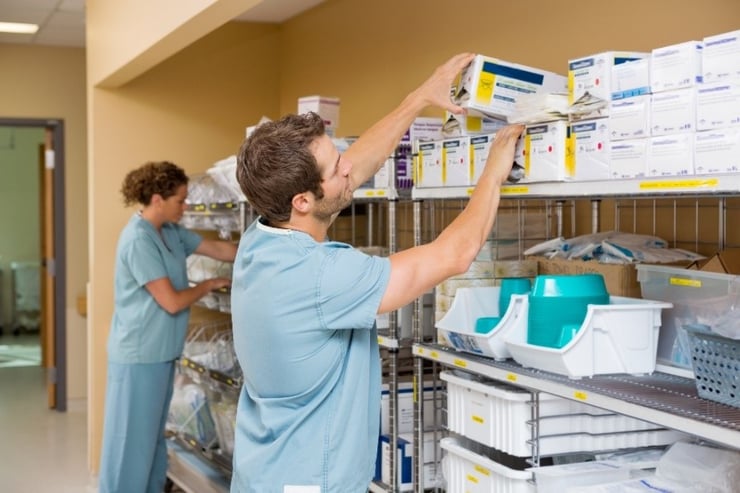
I had the pleasure of hosting a webinar for Surgical Information Systems last week on inventory management. The objectives I set forth were simple: 1. Define the steps needed to build an inventory system within an ASC, 2. Describe the supply chain management process, and 3. List the process and help ensure inventory processes are used efficiently.
Part of ensuring the success of your ASC is building an inventory system that is accurate and maintained. This process should be started before your facility ever opens, and may take several weeks to implement, so please keep that in my mind when devising your plan. It is imperative that your staff is properly trained and that each and every item is meticulously counted for and loaded into your software’s inventory module, along with all preference cards.
A large part of the supply chain management process is having someone in the materials manager role to be in charge of ordering and inventory tracking. Smaller centers with only one or two operating rooms may not need an entire role dedicated for materials management and could easily employ their surgical tech to work this task in the afternoons or when they have downtime. The important thing is that the individual is extremely detail oriented and keeps the inventory current and loaded into your software system.
It is also important to make sure your ASC has written and clearly defined policies and procedures on materials management to ensure accuracy, avoid fraud, and help save on your facility’s costs. I also urge you to evaluate all the points of service you work with, including GPOs, distributors, and sales representatives, and make sure they are serving you and your facility as best they can.
Finally, you want to achieve efficiency in your supply chain management process. Standardize your process. Hold vendor fairs and make sure you’re working with the ones best suited to your needs. Conduct evaluations of the products your physicians and nurses are using. Educate your staff on the costs of these materials so they understand the weight of their decisions and use them responsibly. Limit the number of products you order per category and try your best to cut down on the number of middlemen you go through.
At the end of the presentation we held a short Q&A session and I’d like to summarize and share those discussions below in hopes they can be of some help to you as well:
Q: When you were defining steps to build an inventory, you mentioned that the process should be started before an ASC opens. Can it be done after we have already opened?
A: Yes, loading inventory after your ASC has already opened can be done. It is very difficult to do, but it is certainly not impossible. It will take a determined and hardworking team, some outside help, and it must be done systematically and may require after hours work, but it can be done!
Q: Ann, in your presentation you mentioned making sure ASC’s are using vendors that are credentialed, what exactly do you mean by that, do you mean making sure they are credentialed like your medical staff?
A: Use a vendor credentialing service, such as Vendormate or IntelliCentrics. The vendors should check into the computer terminal at your front desk, and if they are up-to-date on all their vaccines, are properly trained on aseptic technique, and the vendor company they work for is vouching for the individual, a nametag will print. Working with the right vendors means choosing someone you can trust.
Q: Do facilities allow their vendors to view the center’s surgery schedule?
A: I would advise against it, and it is not something I would do. The vendor should only be there for the specific surgeon that has requested their presence. You should also ask yourself if this maintains HIPAA requirements. Is patient confidentiality being upheld?
Q: Do I need to check to make sure vendor suggested substitutions are appropriate before buying them?
A: Yes, you absolutely need to make sure whatever substitutions your vendor is recommending you buy is appropriate, and if necessary, FDA approved. Just because the vendor suggests something, that does not mean it is always the right choice. One example that facilities are dealing with right now is the use of KN95 masks. They have not been FDA approved for use in an OR like N95 masks have and therefore are not an appropriate substitution.
To view my presentation and see the details, tips, and tricks laid out in full, click here.



























